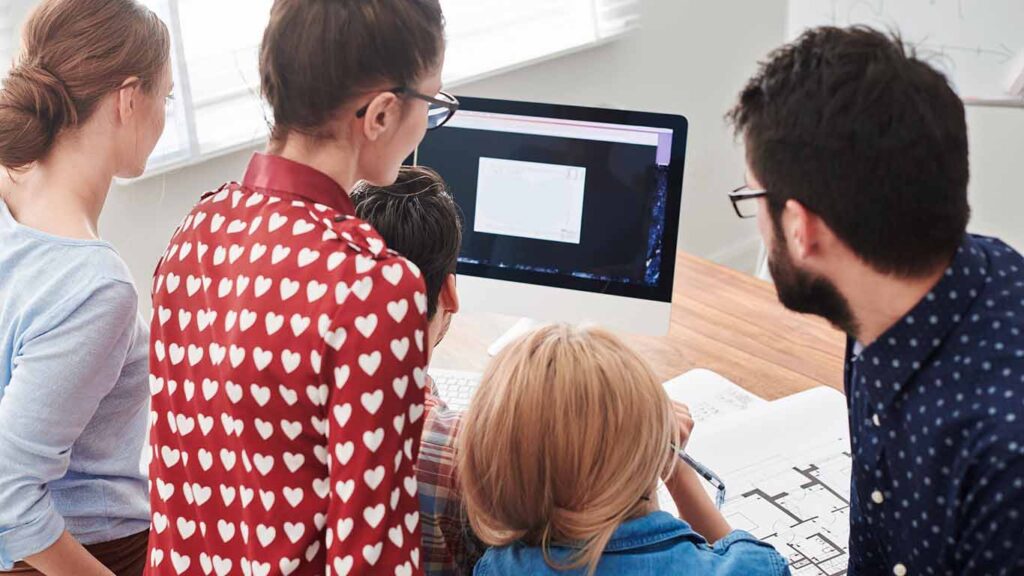It takes more than good looks for modern websites. They also must make users want to use them and keep using them. Thats where animation techniques come in – animations show users the way, focus users’ attention on important action, get more valuable feedback from user.
They also affect mental attitude and feeling among users toward a website. The right motion can generate trust, excitement — even brand loyalty. Animation isn’t a trend any anymore.
It is technology that rides on top of the human brain. This blog discusses the effects of animation trends on the psychology of web design New York City today.
Microinteractions That Connect Emotionally
Microinteractions are tiny animations that respond to user input. This might be something as simple as a heart pulsing when liked, a button pulsing when hovered over, or an icon in the menu changing when clicked.
These movements may sound small. But they are a big component of the user experience. They allow users to feel seen and hear. The more connected users feel, the more they like the site.
Microinteractions also help keep users on the right path. A transition that is virtually seamless is indicative of advancement. A shake warns of an error. These are visual cues to confidence.
Animations smooth the user’s path through an interface. They can help make the interface feel more human. For instance, a loading spinner can help relieve the frustration.
Controlling User Attention Via Motion Hierarchy
Motion hierarchy is an animation based way of directing the user’s focus. It works like a spotlight. You can feature what’s important, like a call-to-action button or headline.
Motion catches the eye quicker than text that is not in motion. The reason is that our eyes automatically track movement. Designers leverage this to direct users to the next step.
Consider, for example, a sign-up form. Users will notice the form right away as it is displayed with a smooth slide-in effect. If the “Submit” button is the faintest bit brighter after any fields are completed, customers understand that they ‘ve got the next step.
These gentle nudges point the way. There’s no guessing. Users feel in control. Keep the animations simple. And Too much movement is confusing for users.
Establish Trust Through Natural Timing And Relaxing
Trust is an important part of designing a website for today. Animations help create that trust. The secret is in the timing and relaxation. Easing is the way an animation begins and ends.
When you accelerate or stop, the transition feels seamless and organic. The kind of jerky or too-fast animations, instead, come off as robotic or sketchy. They can make users uneasy.
A fast enough flicker might appear as a glitch. Users may be concerned about security or bugs. Animations provide feedback, too. A gentle rise indicates that something can be clicked.
A soft fade alerts users that something is loading. These signals alleviate ambiguity. They also give the experience a sort of predictability. That builds confidence.
Stimulate Adventure With Scroll Animations
They leak content a little at a time as opposed to giving away entire contents. This maintains a strong sense of freshness to the experience. It creates curiosity. User want to see what’s next.
Scroll-triggered animations could allow you to showcase your content, one piece at a time. Text can slide in, images can fade into view. Icons might pop gently.
Each of these moves keeps the user functional. This increases retention and rememberability. These animations also aid in breaking up long pages.
Designers like web design firms in New York can also leverage scroll effects to emphasize messages. For example, statistics may tick up as it comes onto the screen.
Building Brand Identity With Signature Movements
Of course, every brand wants to be memorable. Animation helps with that. Signature motions are an animation style that is exclusive to the brand’s voice.
Classic logo loading screens etc. can be used across a site. They “give some campaign to defend the brand,” he said. Motion is built into the brand.
Consider a logo that animates itself when the page is opened. Or a product card that can be flipped to display more information. These are not random animations.
Conclusion
How users feel, think and do when using websites is also shaped by animation techniques. Emotional bonds are formed through microinteractions. Motion helps attention to follow the hierarchy.
Smooth timing builds trust. Scroll animations are a curiosity piquing invitation. Signature moves also reinforce brand identity. All these forms condition user psychology deeply.
Applied with care, animation can bring a Web site to life. It isn’t just about what you see — it’s about connection. The connection is what keeps users hooked, satisfied and loyal.



